Luke Stephenson and Helen Champion are the creative pair behind a new book recently released by Particular Books: The Clown Egg Register. Dee Dee Chainey finds out more for #FolkloreThursday …
What is the Clown Egg Register?
Helen: Clowns International was founded in 1946. One of their founders, Stan Bult, had a hobby of painting the individual clown faces he’d seen on to eggshells. It was a hobby that helped him to remember each unique clown face and the performer’s name. The eggshell collection soon grew and developed into a distinctive record of every clown performer who joined. Stan painted his clown faces on to hen eggs that had been blown but these proved to be quite delicate and were easily broken. When Stan Bult died in 1966, his collection of eggs went on show in a London restaurant. The tradition of a painted clown egg became almost forgotten but an interest in them resumed once more in 1979, this time, Clowns International introduced the use of pottery eggs, which are larger and quite a bit stronger.
—And why eggs?!
Helen: I think originally, Stan Bult might have chosen the egg because of the oval shape, which could be considered a blank canvas for a face to be applied. Those hens’ eggs didn’t prove to be very strong and many became lost or broken. Each face is quite exclusive, and the eggs now act as a copyright register for a clown’s personal make-up design.
Since 1979, the collection has grown quite considerably and there has been a variety of different egg artists, the current one is Debbie Smith who is a clown herself, Jolly Dizzy.
The collection, due to its size, is currently split and kept in two places. Some are held at the clowns’ church, Holy Trinity in Dalston, east London, the rest at Gerry Cottle’s Clown Museum in Wookey Hole, Somerset.

What sparked your interest in the project initially?
Luke: I randomly stumbled across the clown eggs in the old clown museum which was in a church hall in Hagerstown east London before it moved to Wookie Hole.
As soon as I walked into the hall I was greeted by a cabinet with all these little egg faces looking at me and was instantly intrigued. I contacted Clowns International who agreed to let me photograph the eggs from the cabinet; there were around 40 eggs that made up the Dead Famous collection (really famous clowns who are now dead). I did this in 2007 and left the clown eggs for a while until I was asked to take a portrait of Mattie, who was the spokesmen of the society in 2013, and started to think about the wider collection — around 250 eggs. I started to try and negotiate a trip to Wookie Hole to document the whole collection so it could be enjoyed by many more people.
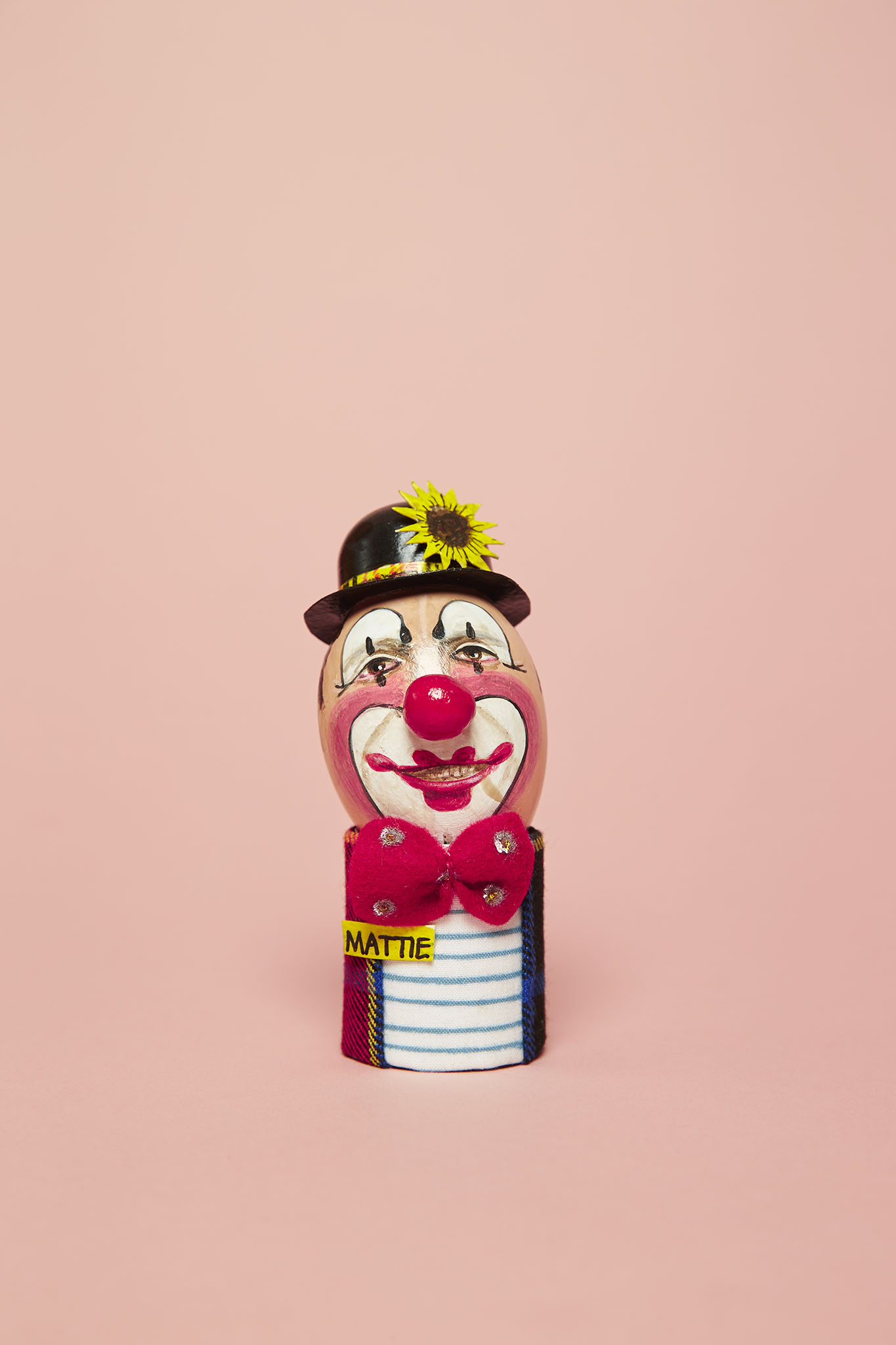
Helen: I first became interested in the world of clowning through studying for my Fine Art degree at Goldsmiths University. I became interested at looking into humour and its early forms, particularly slapstick and buffoonery methods, for example Buster Keaton and Charlie Chaplin. During my quest for information, I soon got to know a few of the clowns from Clowns International at Dalston Holy Trinity Church: Mattie, Gingernutt, Jolly Jack and Bluebottle. They were really helpful, and I quite enjoyed their individual characters and stories aside from the makeup and performative aspect. Luke came to enquire about photographing some of the eggs for a book when I happened to be there and I mentioned that it would be great to have the clowns’ individual stories to go alongside the pictures.
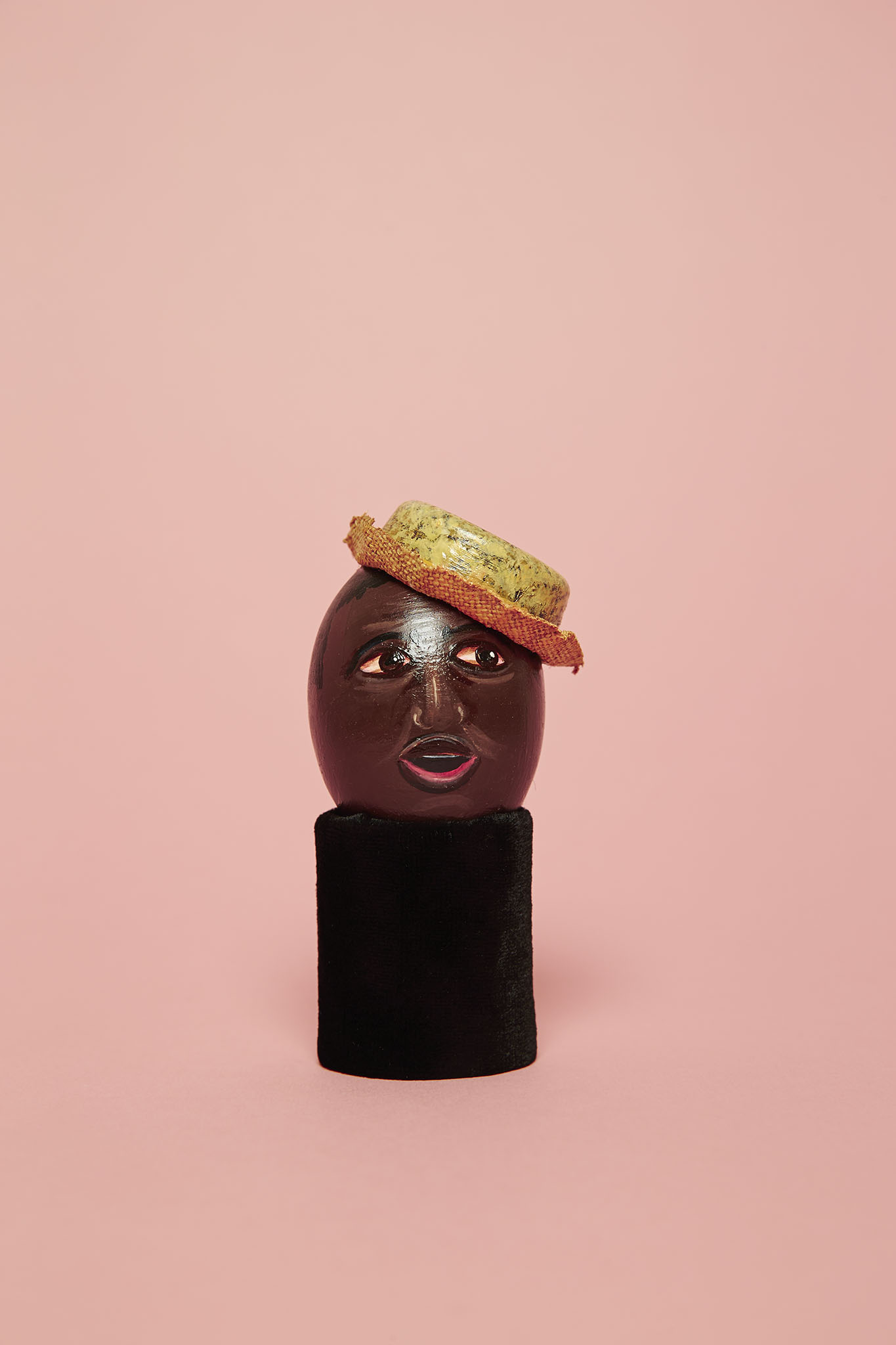
Is there a specific egg, and backstory, that really caught your attention?
Helen: There are several stories which I enjoyed when putting together the book. Some were research based and others were telephone interviews, emails or meeting in person. I liked the stories of Beato and Uncle Fred, who are Sheila and Harry Beatson, whom have been married for sixty years and met at Bass Charrington Brewery. I was quite humbled also by the story of Conk who discovered clowning after his divorce and wanted to cheer himself up and entertain his children. Chocolat the clown has such a sad story, which has also been made into a film.
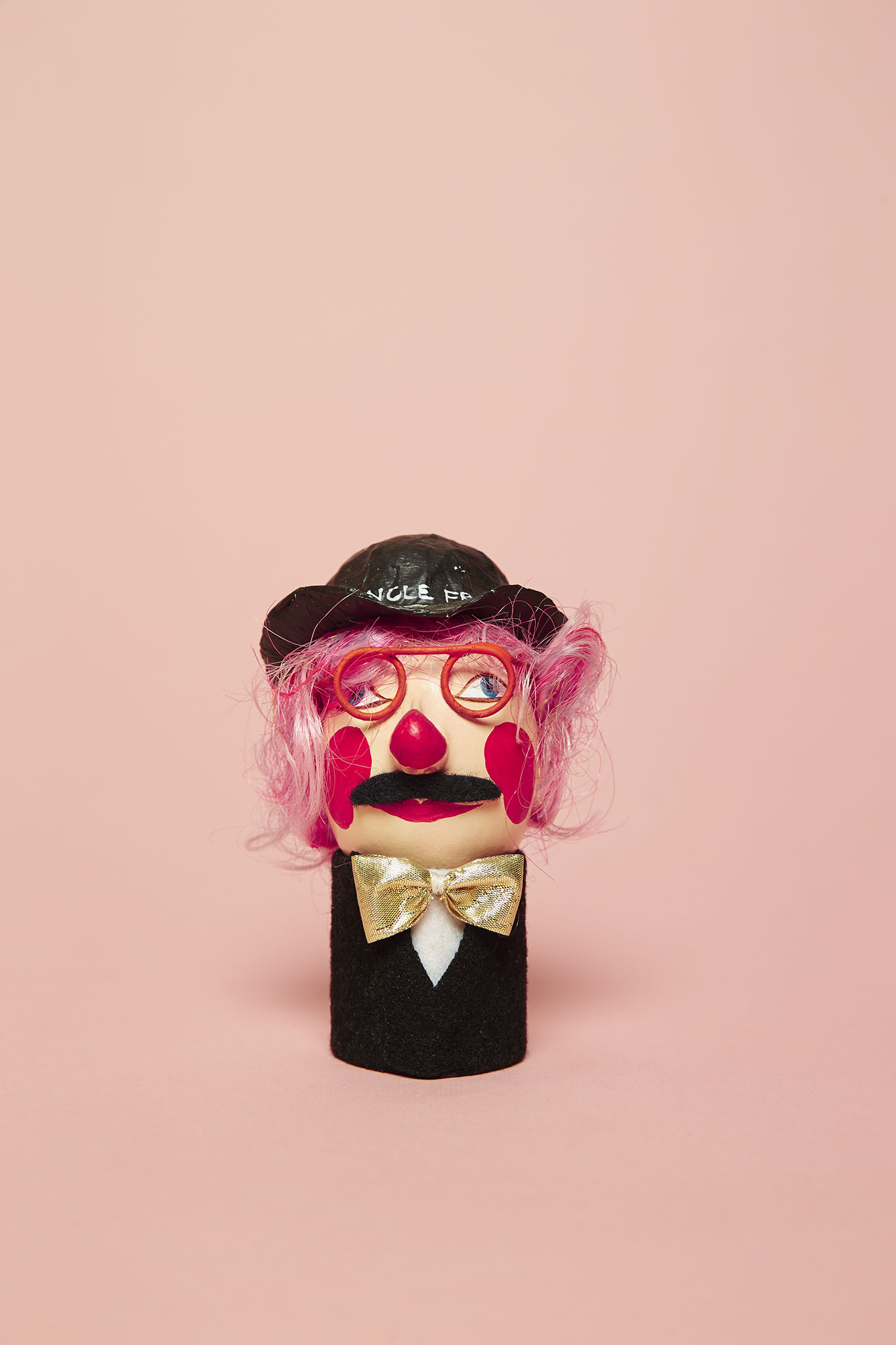

Luke: It is only recently that I have learnt the stories of many of the clowns I have been looking at for years within my photographs so I think I certainly have my favourites visually. For some reason I’ve always liked Bunny Rabbits face, but since Helen has completed the bios I’ve become a massive fan of Lulu Adam, and also Grimaldi who is the father of clowning as we know it.
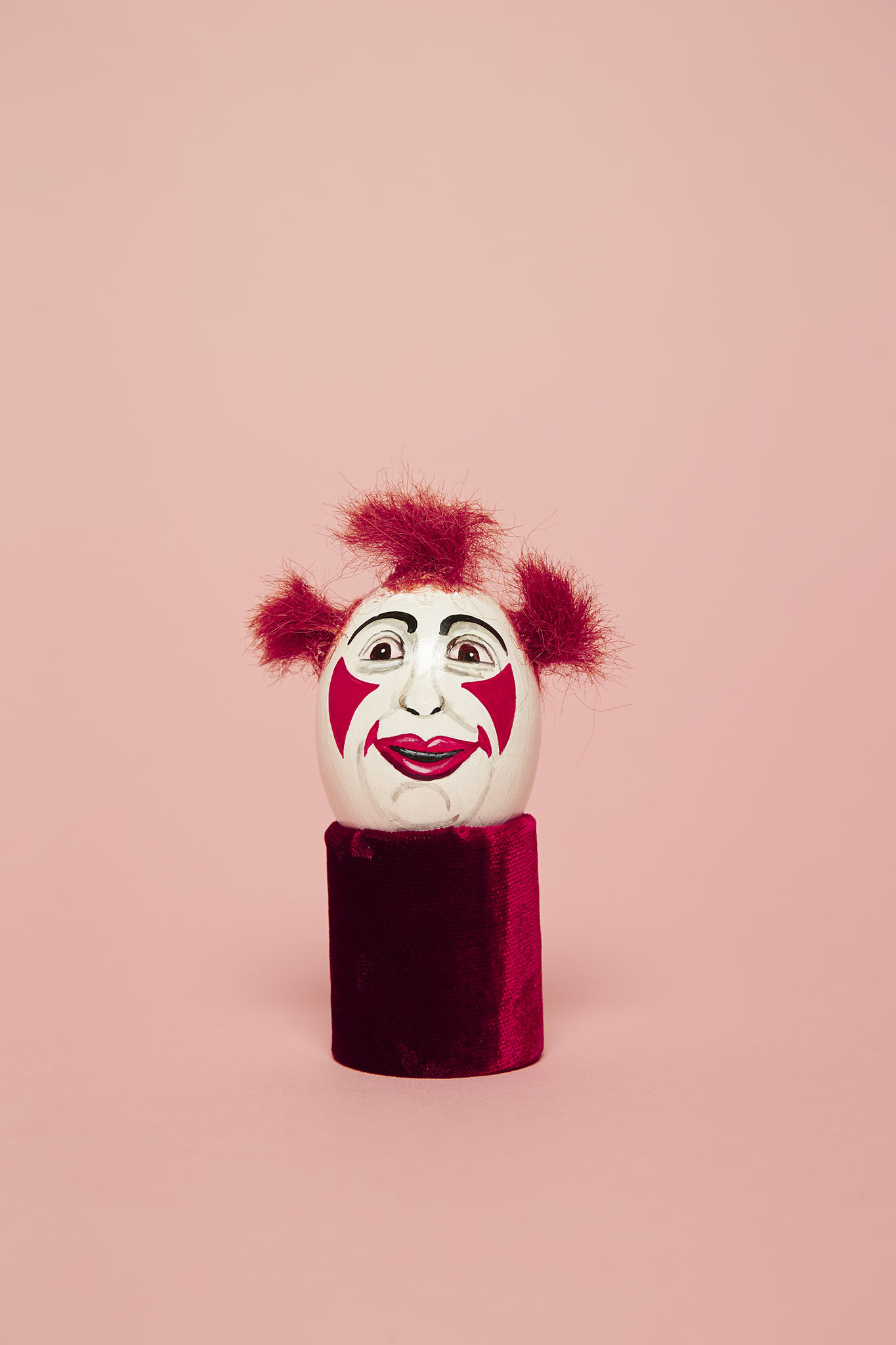
Have you had the opportunity to meet any real-life clowns during your research?
Helen: Yes, I have met several during the course of collating the book, and, I’ve also had some long telephone conversations too. One of the clowns is quite local to me, Tweedy, as I’m from Gloucester and he performs with Giffords Circus.
Luke: I have met Mattie and Gingernutt, who were present while I photographed the eggs, and were very knowledgeable about the clowns I was photographing especially the Dead Famous collection. I think it’s such a strange memorial to a person’s life that they should be immortalised on an egg; I think that’s why I love these objects so much. There’s always a story behind each little egg.

Why do you think clowns and clowning are so interesting to people today?
Helen: Clowning is one of the earliest forms of humour and has been used to engage audiences for centuries. I feel that clowning has to constantly evolve with the times to stop it from becoming stagnant and dated. Clowning is a really highly skilled profession that has a pressure to be quick, sharp, witty and requires precision and timing. We are of a time that is very technological, very fast paced and although the interest for family trips out to theatres and shows may not be so much in demand as they once were, certain elements of slapstick humour are definitely of appeal and can reach out to a wide age range. I feel there is a lot to be gained from watching a performance in a theatre or ringside, there will always be magic with human connection and sharing these experiences with others, and there are always new ways that these skills can also extend outwards to stretch a variety of audiences. There is always a place for funny and silly.
Luke: I think it’s a bit of a funny time to be a clown. There are so many things that kids can be entertained by now that I think it must be very difficult. There are also a lot of negative views of clowns with all the scary incarnations of what is essence a fun loving character, so I think it’s good to be showing clowns in a positive way with this book.

What’s the strangest thing you came across during the project?
Luke: Nothing really that strange happened if you disregard that I spent a couple of days photographing eggs painted like clowns … which is quite a odd thing to do with your days! Although, during the days I spent at the clown museum I couldn’t work out how to turn the circus music off, so I had a collection of circus music on loop, which was slightly maddening after a while!
And what’s the most interesting thing?
Helen: The book was quite highly research based, a lot of the clowns are sadly no longer with us. For the quite a bit of the information I visited the National Fairground and Circus Archive which is located in The University of Sheffield. It’s a real treasure trove, so much information: many, many books, photographs, historic documentation, and a wonderful database which holds lots of key information. Such a find, and really helpful accommodating staff.
I also enjoyed many a phone chat to a variety of different characters from all walks of life and varying ages and backgrounds.
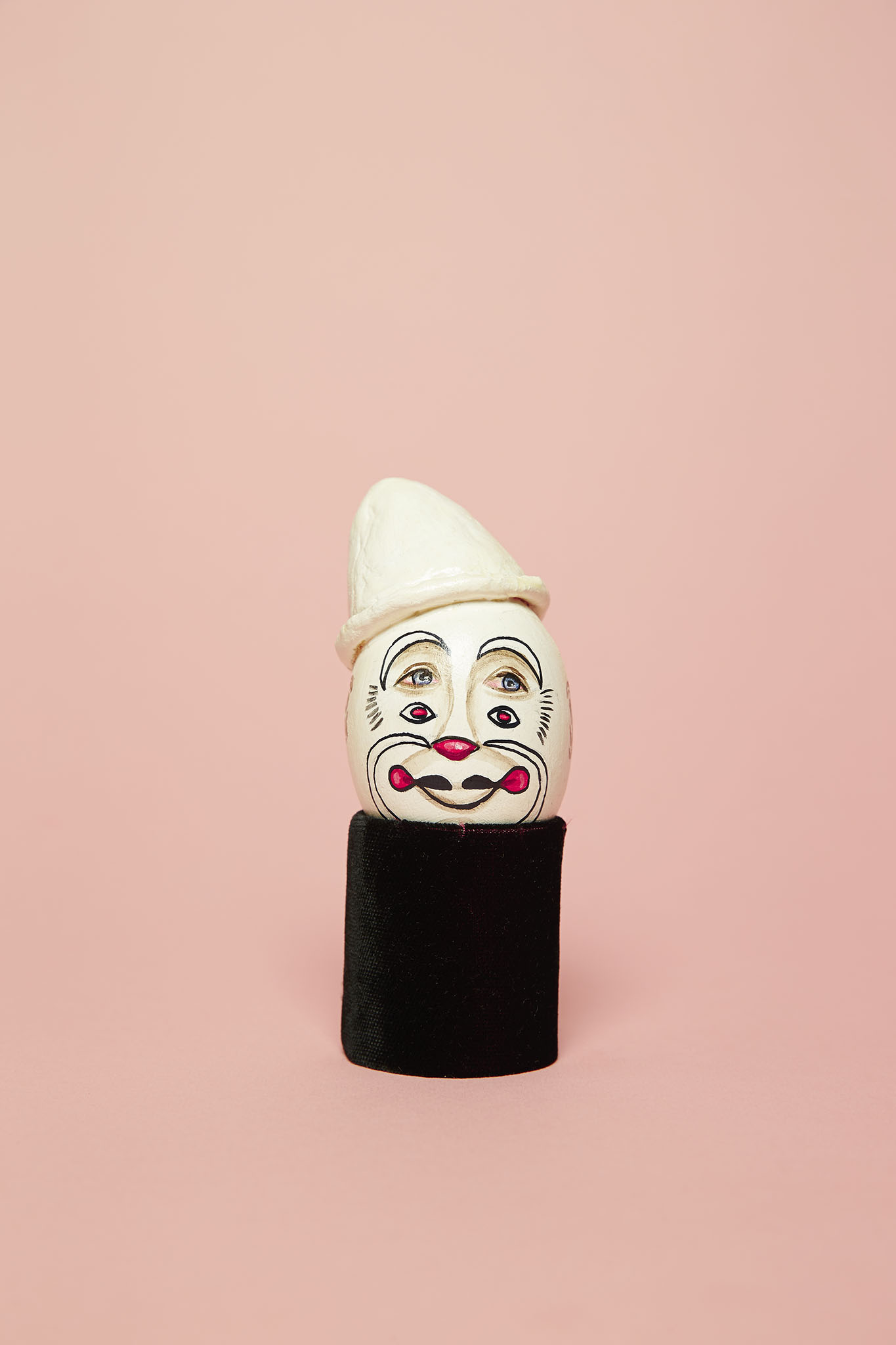
Would you ever consider becoming clowns, just to have your own clown egg? What would they be like?
Luke: I have often thought I would be great to have an egg of a face you’ve designed, but sadly you have to perform as a clown before that is possible. I’m not sure I could do that — it certainly is a Art form. Saying that, I think I’d be a white faced clown and have lots of eyes … a bit like Frankie Saluto.
Helen: I became involved with clowning and the clowns at the Holy Trinity Church in Dalston whilst studying for my Fine Art Degree at Goldsmiths University. During university presentations of my work, when I spoke, two separate tutors asked me on different occasions, quite seriously, if I am a stand-up comedian. I am not and, at that point, had never considered it but thought, if they think I am funny then perhaps I am a clown. Clowning is the earliest form of funny I can remember and I enjoyed going to the circus with my grandfather and watching Buster Keaton and Charlie Chaplin videos with him.
I soon contacted the clowns in Dalston, had tea and biscuits, quite enjoyed sitting in the gallery with them (when it opens to the public on the first Friday of each month). I liked how they weren’t actually in character or costume for this, they were in jumpers and having sandwiches, cake, biscuits and drinking tea and coffee surrounded by clown memorabilia. I enjoyed listening to where they had worked, their histories.
I thought, I could give this a go, see what it might actually be like to become a clown, if it would be different when the make-up was applied, would I have a character that is separate to my own. How easy would it be?
I designed and made a costume in red and white cotton with spots and stripes, based on Andy Pandy — a sort of pajama suit all in one with a ruffle around the neck and oversized pockets. I ordered a clown nose from Pro Knows in America and waited for this to arrive and decided that my Clown name would be “Zenden”… As a tribute to the song Send in the Clowns.

Next, I contacted Mattie Faint (Clown Mattie – in Dalston) to design a unique clown face for me. Which he did and we subsequently filmed it at the Clowns Gallery being painted and applied onto my face as he talked through what he was doing, hints, tips, quirks and funny on the job stories.
Next came the hard part … and what I hadn’t estimated at all … Performance! I have performed three times as Zenden. It has been an uncomfortable experience each time — I am not a natural! What I have learnt is there is a massive difference between being intentionally funny and being unintentionally funny. Levels of expectation also factor into the equation, once those lights go up and all eyes are on you expecting something, whatever was rehearsed or practiced seems to fall by the wayside as nerves would get the better of me. Naturally clumsy as I am, being unnaturally clumsy to order isn’t as straightforward — this could improve with practice but I don’t think the genuine fear would.
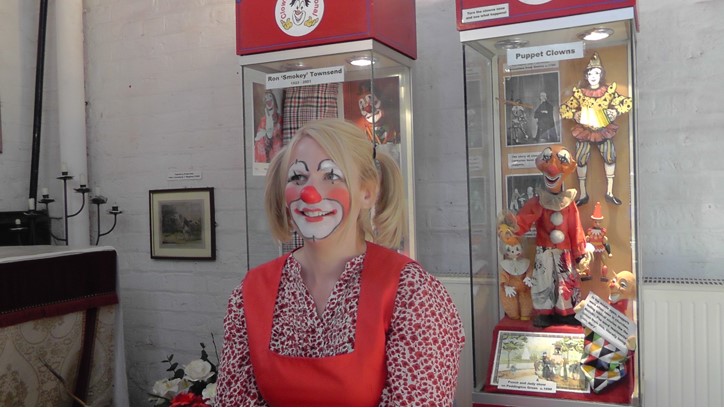
I don’t think that I am a clown, but felt it was important for my own research to explore this and experiment. Who knows what we can be unless we try. It’s certainly been a beneficial and valued experience of which I have met a variety of life’s enriching characters and I shall always hold clowning with the highest regards. Because of the high levels of interaction with audiences on a supply and demand basis that clowns provide over and over it has definitely made me appreciate the art of what they do a whole lot more, and, however easy they make it seem … it definitely is not.
Win a copy of The Clown Egg Register by Luke Stephenson & Helen Champion
The wonderful folks over at Particular Books have offered THREE copies of this amazing new book for three lucky #FolkloreThursday readers this month!
For over 70 years, Clowns International – the oldest established clowning organization – has been painting the faces of its members on eggs. Each one is a record of a clown’s unique identity, preserving the unwritten rule that no clown should copy another’s look. At first they were painted on real eggshells, then later (when they kept breaking) on to ceramic eggs, most of which are now housed at the Wookey Hole Clowns’ Museum. Here images from this extraordinary archive are accompanied by the stories of the men and women behind the make-up.
Sign up for the #FolkloreThursday newsletter to enter (valid April 2017; UK & ROI only).
The book can be purchased here.



